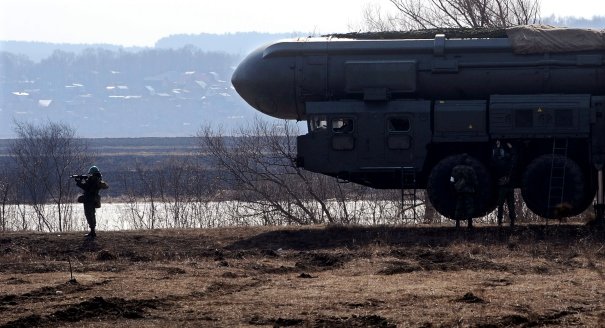The Cooperative Threat Reduction Program, otherwise known as the Nunn-Lugar Act, which marked its 20th anniversary in 2012 and was extended by the U.S. Department of Energy, was completely terminated by a decision announced at the end of 2014.
The U.S. Senate and a series of administrations have changed their views on this program numerous times since its inception. During George W. Bush’s first term in office, the Republicans insisted that the program be curtailed, claiming that Russia invests significant resources in modernizing its nuclear arsenal and is capable of liquidating its weapons stockpiles independently. As a result, funding for the program was cut in 2002. However, the funding was restored following the Baker-Cutler report, which pointed to the danger of Russian WMDs ending up in the hands of terrorists or hostile states where they would pose an almost immediate threat to the U.S. national security.
Meanwhile, in October 2012, Russia decided not to extend the Nunn-Lugar program after it was to expire in May 2013. Instead, it offered an equal partnership in the efforts to reduce the nuclear threat. It was thought that past experience can be jointly used in third countries that are facing nuclear security issues. Moscow formulated these proposals during Russia’s years of plenty accompanied by declarations of Russia’s growing global role and independent policies.
However, in the current crisis between Russia and the West precipitated by the situation in Ukraine, attempts by Moscow and Washington to create a new format for their relations in this sphere are all but doomed to fail in the foreseeable future.
Nevertheless, under any future scenario, the experience gained in the course of the Nunn-Lugar program may prove useful. I will discuss it below only as it relates to nuclear weapons.
According to Washington’s official records, Russia, Ukraine, Kazakhstan, and Belarus received 8.79 billion dollars in program funds between 1991 and 2012. These funds allowed for the destruction of 902 ICBMs and 684 SLBMs, 498 ICBM silos and 191 ICBM mobile launchers, 33 nuclear weapon carrying submarines, 906 nuclear air-to-surface missiles, 155 heavy bombers, and over 190 nuclear test tunnels.
The United States provided a large number of containers for safe transportation of nuclear warheads, and the equipment that improved safety at nuclear weapons’ storage facilities was upgraded.
High tech production units for cutting missile airframes and dismantling missile launchers, which are apparently still operational, were erected in Surovatikha’s liquid-fuel ICBM storage and liquidation facility in Nizhny Novgorod region. A similar facility for mobile launchers and solid-fuel rockets was built in in Pibanshur, Udmurtia.
Under any future scenario, the experience gained in the course of the Nunn-Lugar program may prove usefulTweet This
The Nunn-Lugar program has certainly played a crucial role, especially in terms of guaranteeing nuclear safety and liquidating nuclear weapons’ stockpiles, at the time when the former Soviet states faced a severe lack of funding to accomplish these tasks. It is important to note that the allegations that the program was just a mechanism the Americans used to disarm Russia are completely groundless, since only the nuclear missiles that were nearing the end of their extended lifecycle were being liquidated.
As for the flaws in the program implementation, such as wasteful spending and inefficiency pointed to by some Russian experts, they likely relate to the organization of work inside Russia. In this context, it may prove instructive to compare the Russian organizational structure to that of Ukraine.
In fact, a single individual, Ukraine’s deputy defense minister and a former commander of Strategic Missile Forces, was responsible for liquidating the country’s entire nuclear arsenal. He shared his experience during his visit to Moscow in 2000. At that time, he alluded to the comments that American specialists made regarding organizational differences in Russia and Ukraine. In Ukraine, he alone was in charge of everything: customs inspections, access to installations, selection of contractors, and financial issues. This ensured a virtually flawless process. In comparison, the Americans were critical of how similar work had been organized in Russia. Several ministries and agencies were simultaneously responsible for the same projects, and each of them had its own rules, rights, and responsible parties. This led to lengthy waiting periods for various approvals and permits, as well as additional travel expenses.
Drawing on his positive experience, Russia attempted to introduce a similar process, making only one party responsible for the entire project. The draft proposal, which had to be approved by all participating ministries and agencies, eventually failed to get off the ground because no one wanted to lose a source of financing.
This is but one aspect of the lessons learned that should be taken into account when working with these and other programs.
It is extremely difficult to predict the prospects for new comprehensive agreements on nuclear threat reduction in the midst of the current international crisis. But crises do not last forever. We can always hope that there will come a time when all of the facets of the unique Nunn-Lugar program will be deemed useful.





